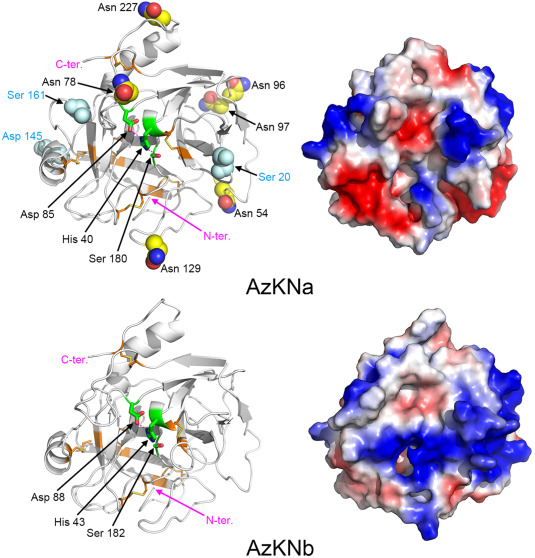
 中央研究院 生物化學研究所
中央研究院 生物化學研究所
The semi-fossil and pit-less Azemiops feae is possibly the most primitive crotalid species. Here, we have cloned and sequenced cDNAs encoding four serine proteases (vSPs) from the venom glands of Chinese A. feae. Full amino-acid sequences of the major vSP (designated as AzKNa) and three minor vSPs (designated as AzKNb, AzKNc and Az-PA) were deduced. Using Protein-BLAST search, the ten most-similar vSPs for each Azemiops vSP have been selected for multiple sequence alignment, and all the homologs are crotalid vSPs. The results suggest that the A. feae vSPs are structurally most like those of eastern-Chinese Gloydius, Viridovipera, Protobothrops and North American pitvipers, and quite different from more-specialized vSPs such as Agkistrodon venom Protein-C activators. The vSPs from Chinese A. feae and those from Vietnamese A. feae show significant sequence variations. AzKNa is acidic and contains six potential N-glycosylation sites and its surface-charge distribution differs greatly from that of AzKNb, as revealed by 3D-modeling. AzKNb and AzKNc do not contain N-glycosylation sites although most of their close homologs contain one or two. Az-PA belongs to the plasminogen-activator subtype with a conserved N20-glycosylation site. The evolution of this subtype of vSPs in Azemiops and related pitvipers has been traced by phylogenetic analysis.
